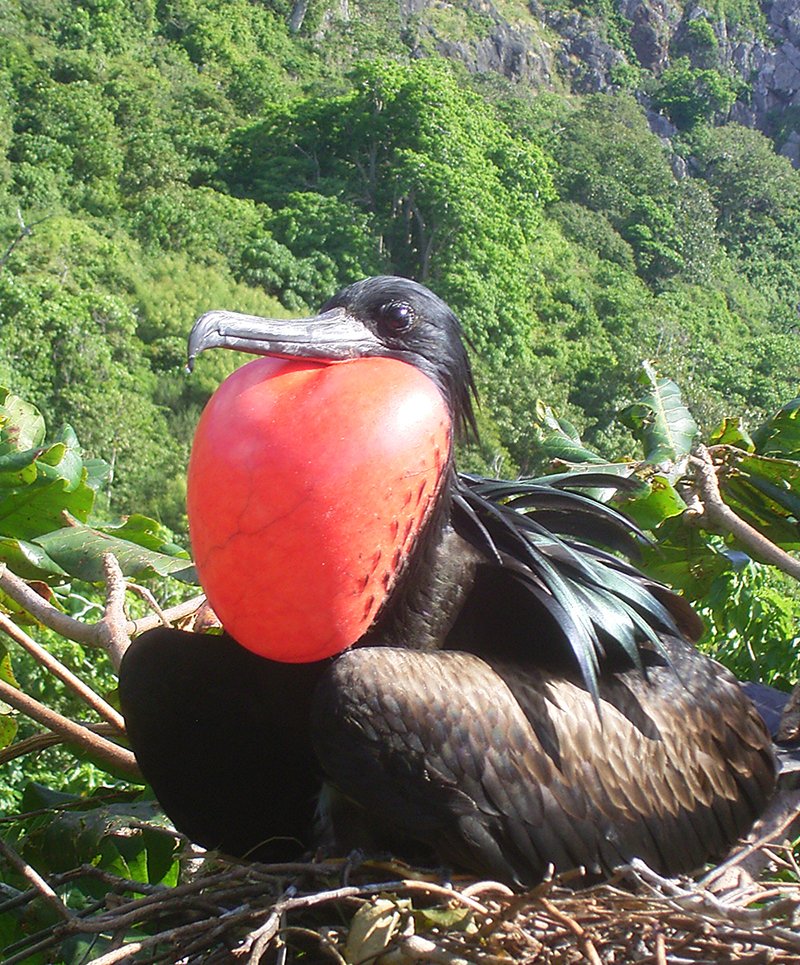The most unlikely seabird

FRIGATEBIRDS ARE CATEGORISED as seabirds even though they can’t abide the sea. If they land on its surface they become waterlogged and drown. They lack waterproof feathers, and have wings too slender to give much lift. To feed from the sea they rely on tuna and dolphins to drive small fish and squid to the surface, where these can be snatched by beaks that are exceedingly long. Frigatebirds also operate as pirates, harassing other seabirds in flight until they disgorge their meals.
Frigatebirds should really be called airbirds. They can spend two months at a time in flight, feeding and sleeping while airborne. Attached data loggers show them to take brief naps, mainly while circling high above the sea in rising air currents.
Many bird species are known to sleep unihemispherically, with half the brain asleep while the other maintains vigilance through the eye it controls. Great frigatebirds take naps of this kind lasting 11-12 seconds, although these add up to less than an hour’s sleep each night. They also engage in rare episodes of apparent rapid eye movement (REM) sleep when they drop the head rather than looking ahead. The one eye kept open must be to avoid collisions with other frigatebirds since they never take naps close to the sea. Back on land after epic journeys they catch up by spending half their time asleep.

The Christmas Island frigatebird population has halved since the 1940s. (Image credit: Janos Hennicke, courtesy of the Christmas Island Tourism Association)
Frigatebirds use thermals over the sea to get lift for gliding. Where cumulus clouds form they can rise rapidly on updrafts without having to flap, reaching altitudes as high as 4000m, before soaring vast distances as they descend. In the Indian Ocean great frigatebirds journey in large loops around the doldrums without much effort. They are birds of the tropics but go high enough at times to encounter subfreezing temperatures.
Australians have a special responsibility for these specialties because there are only five species in the world and one breeds only on Australian territory, on Christmas Island. This place is frigatebird central, with greater and lesser frigatebirds as well.
The Christmas Island frigatebird has a population of only 5000, less than half what it was in the 1940s. Their numbers have fallen because of phosphate mining, and when they forage in Indonesian waters they are caught for food and drown in nets. With their striking black and white plumage and the males’ red throat pouches they are magnificent birds that I have often watched at the island’s golf course and cemetery, their two breeding places.
I hope we don’t lose them.




